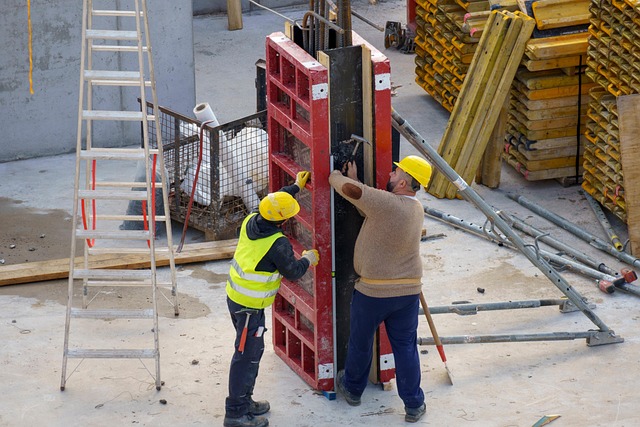Professional utility potholing uses advanced tech like GPR to accurately map & locate underground utilities before construction, preventing damage & costly mistakes. Essential tools include high-def cameras, GPR, & precise drilling rigs, offering enhanced accuracy, swift yet meticulous operations, and safety features. Choosing the right equipment based on project scale & soil conditions is critical for efficient, safe, & cost-effective utility potholing, minimizing underground infrastructure damage.
In the realm of infrastructure maintenance, professional-grade equipment plays a pivotal role in ensuring accurate and efficient utility potholing. This essential process demands precision to uncover underground utilities without causing damage. Understanding the basics of professional utility potholing is the first step towards effective management. From advanced tools to strategic choices, this article explores the key components, benefits, and considerations for selecting the right equipment to revolutionize your utility mapping processes.
Understanding Professional Utility Potholing: The Basics
Professional utility potholing is a precise and specialized technique used by experts to locate and map underground utilities before any construction or excavation work begins. It’s more than just digging; it’s an intricate process that involves advanced equipment and methods to ensure safety, efficiency, and accuracy. By understanding the basics of professional utility potholing, project managers and contractors can better appreciate its importance in avoiding costly mistakes and potential damage to vital underground infrastructure.
This process starts with a thorough assessment of the site using ground-penetrating radar (GPR) or other advanced detection technologies. These tools create detailed images of what lies beneath the surface, revealing the location and depth of pipes, cables, and other utilities. Once identified, precisely marked holes are dug, or “potholes,” to expose specific sections of these underground assets. This allows for meticulous examination, documentation, and planning for any necessary repairs or upgrades without disrupting aboveground activities or posing risks to buried utilities.
Essential Components of Professional-Grade Equipment
When it comes to professional-grade equipment for accurate utility potholing, several essential components stand out. First and foremost, a top-tier utility vehicle is crucial. This should be equipped with robust engines, advanced navigation systems, and a design that facilitates easy access to hard-to-reach areas. Such vehicles ensure efficient mobility, enabling quick response times and seamless operations at various job sites.
Additionally, professional-grade equipment includes specialized tools such as high-definition cameras, ground penetration radar (GPR), and precise drilling rigs. These tools play a vital role in locating underground utilities with pinpoint accuracy. Advanced camera systems offer clear visual feedback, while GPR technology penetrates the earth’s surface to reveal buried lines, pipes, and cables. Drilling rigs equipped with real-time data analysis capabilities ensure clean, controlled excavations, minimizing damage to critical infrastructure during utility potholing operations.
Benefits of High-Quality Tools for Accurate Potholing
High-quality tools are indispensable for accurate and efficient professional utility potholing. These specialized devices, designed to navigate underground infrastructure with precision, offer numerous advantages over their lower-grade counterparts. Firstly, they provide enhanced accuracy, minimizing damage to surrounding utilities and reducing the risk of costly mistakes during excavation. Advanced features like GPS tracking, real-time data feedback, and ergonomic designs enable operators to work swiftly yet meticulously, completing projects faster and within budget.
Moreover, investing in professional-grade equipment enhances safety for workers and the general public. Modern tools often incorporate safety protocols and robust construction to withstand demanding conditions. They may also include innovative technologies that prevent collisions, detect underground hazards, and ensure smooth operations, ultimately contributing to a safer work environment.
Choosing the Right Equipment for Your Utility Needs
When it comes to professional-grade utility potholing, selecting the right equipment is paramount for achieving accurate and efficient results. Different types of jobs require distinct tools, so understanding your specific utility needs is crucial. For instance, electric or hydraulic excavators are ideal for large-scale projects where precise excavation is essential, while manual tools like hand diggers and shovels are more suitable for smaller, intricate tasks.
Consideration should also be given to the type of terrain and soil conditions you’ll encounter. Hardened concrete demands specialized equipment unlike soft earth. Advanced technology offers features such as GPS guidance, real-time data monitoring, and precise cutting capabilities, enhancing accuracy and safety. Investing in high-quality, professional utility potholing equipment ensures minimal damage to underground utilities while maximizing efficiency for your projects.
Professional-grade equipment is an invaluable investment for accurate utility potholing, ensuring efficient and safe underground infrastructure management. By understanding the essential components and benefits of high-quality tools, you can choose the right gear to enhance your utility operations. Incorporating advanced technology and durable materials, these tools enable precise localization, minimal damage, and faster completion times, ultimately streamlining your work processes. For precision, efficiency, and peace of mind, upgrading to professional-grade equipment is a game-changer in the realm of utility potholing.
